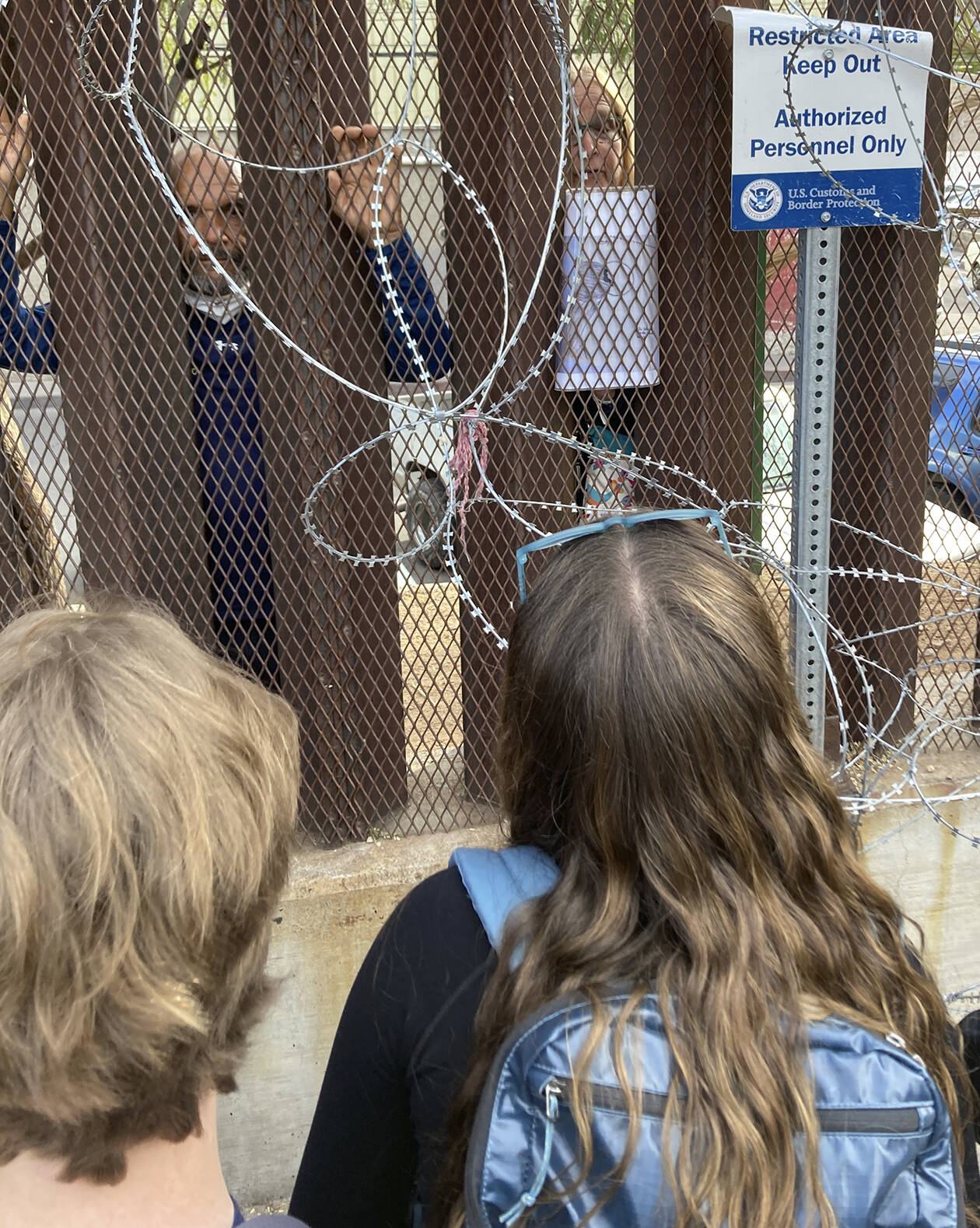Ten high school-age students from Hyla School on Bainbridge Island spent their winter break getting an eye-opening course on migration and its impact on the U.S.-Mexico border.
It was more than just a history lesson. The students brought home a visceral understanding of the double standard that borders can represent — especially for young people pursuing an education who may find themselves caught between worlds.
Hyla School, a private independent school on BI that offers multi-grade classes and specialized curriculums, hosts a three-week deep-dive course in between semesters for students. This year, it was called Borderlands.
Students began with a look at immigration in Washington, with a focus on state policy and activism in the Chicano community. Students heard from historians and healthcare workers at the SeaMar Museum and Clinic, a nonprofit that specializes in Washington’s Latino community.
“The person who took us on a tour of the museum was the first one to put upon the kids, quoting Dolores Huerta, to ‘get off the sidewalk and get involved’ as active citizens,” said Brad Waugh, Hyla teacher and co-lead of Borderlines.
The message echoed throughout the course, from the U.S.-Mexico border to local community groups like Kitsap Immigrant Assistance Center, Waugh said. “Folks repeated that people in our communities who need solidarity from the [students] and called on them to take all that they learned and experienced and turn it into some good things—to make things better.”
After the SeaMar visit, the class traveled to Arizona, where the impacts of policy took shape. The class visited Nogales, AZ, a city bisected by the U.S. border with Mexico. They found the border wall’s presence striking, especially compared to the Peace Arch at the U.S.-Canadian border.
“People can remember how it used to be, before the intensity of the border wall,” Hyla 11th-grader Naomi Samant said. “They told us, ‘This is not us; this is not our community.’ And you can see it on the landscape — it’s a big scar.”
Students observed the flow of people between the two nations, including a binational class of eighth-graders who commute across the border every day to attend school, which takes around two hours each way.
But not everyone can cross the border peacefully. Hyla students Will Borneman, Willa Sydor, Rider Blanchard and Rhys McCarron described a formative experience while speaking with two activists through the border fence.
“We were talking with Pancho and Rita when a kid, probably fifteen, and two adults started to climb over the wall,” Sydor said. Where the class was standing, the border wall is about thirty-feet tall and strung with barbed wire, with scraps of clothes and hair caught in the fencing. The group was standing next to a memorial for a child who had been caught throwing rocks at the wall and was shot by U.S. Border Patrol.
Borneman added, “It’s brutal to see.”
The kid reached the top in about 20 seconds and jumped down. He took off the second he hit the ground. “Everyone was just silent for about three minutes, having seen this kid doing something that was exceedingly dangerous,” Waugh said. “We talked about the state attempts at deterrence having this sort of an impact, as opposed to actually deterring people from going over the wall.”
When Hyla students returned to BI, their experiences in Nogales stuck with them. They began to see the ways borders defined BI from the rest of Kitsap County, the mainland and inside the community.
“There’s definitely an economic and social border for lots of people who can’t afford to live here,” Sydor said.
Other students agreed, citing the lack of affordable housing. “Bainbridge is secluded, which creates a lack of conversation. We should try to create more awareness and recognize the history of immigration on the island,” Sydor concluded.



